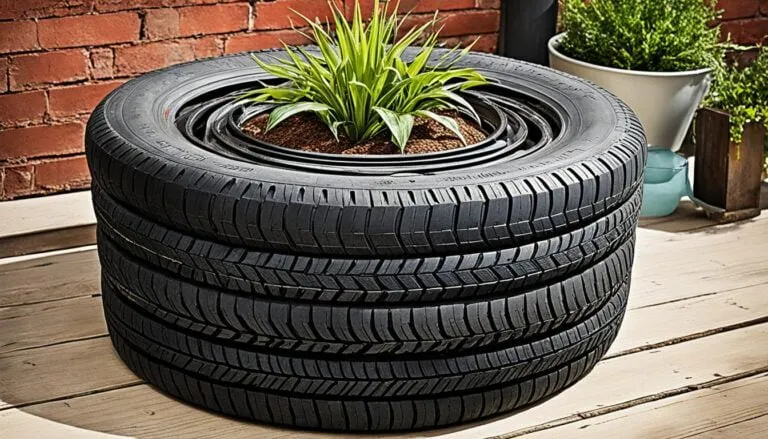Herbs mark our history and add flavor to our meals. They also fill our medicine cabinets with natural remedies. Type of herbs offer more than just taste. They play a big role in our well-being. Cilantro, Italian Parsley, and Rosemary bring more than flavor. They offer nutrition and possible healing properties, making them medicinal herbs.
The popular herbs in our daily meals and the lesser-known ones add to the variety. Herbs like Basil, Oregano, and Thyme connect people worldwide through food. As herbal remedies, they blend ancient principles with today’s health needs.
We enter a world rich with healing herbs, full of ancient wisdom. This journey celebrates their diverse uses and long history. Together, we’ll explore these green wonders, essential in both food and natural medicine.
Key Takeaways
- Type of Herbs Discover the rich flavors and health benefits of herbs, from Cilantro to Rosemary.
- Learn about the historical significance of herb plants in culinary and medicinal contexts.
- Understand the role of herbs in various cultural cuisines, including the staple use of Oregano in Italian dishes and Tarragon in French recipes.
- Appreciate the broad spectrum of type of herbs available, and their applications in both fresh and dried forms.
- Recognize the therapeutic uses of herbs in promoting health, from digestion to heart health and beyond.
Introduction to Culinary Herbs and Their Versatility
Culinary herbs are like magic ingredients. They make food taste amazing around the world. For example, Rosemary adds a bold flavor to meat. And Basil gives Italian dishes a bright kick. Herbs not only boost taste. They also make meals healthier.
Have you ever thought about the many herbs out there? Jekka’s guide to culinary herbs dives deep into this topic. It shows how herbs can turn simple meals into gourmet wonders. Plus, they do this without piling on extra calories. Whether fresh or dried, each herb brings something special to the table.
- French Tarragon is known for its soft licorice taste. It makes chicken and fish dishes elegant.
- Mint comes in over 40 types. It adds a cool, fresh touch to drinks and desserts. This shows how versatile it really is.
- Parsley is more than a pretty garnish. It’s packed with vitamins and makes soups and stews healthier.
- Lemongrass is a star in Asian cooking. Its citrus flavor brightens any dish it’s added to.
Knowing which herbs to mix can totally change a dish. Think about Rosemary and Sage for meat. Or Basil, Oregano, and Marjoram for perfect Italian sauce.
Using a variety of herbs in cooking is exciting. It expands both your flavor palette and cooking skills. Herbs aren’t just about taste. They make meals healthier, more fun, and full of great smells.
Unveiling the Flavors of Popular Type Of Herbs
In the cooking world, popular herbs are key to many dishes. They add unique tastes and bring cultural stories into our meals. Let’s dive into some favorite herbs that are used in cooking and medicine.
Cilantro: A Diverse and Divisive Ingredient
Cilantro is known for its fresh, citrus-like taste. It’s a must in Mexican, Indian, and Asian foods, adding a bold kick. Yet, not everyone loves it, showing how herbs can be a bit complicated.
Sweet Basil: The Quintessential Herb for Italian Cuisine
The “king of herbs,” Sweet Basil, is a key player in Italian dishes. Its strong, sweet, peppery flavor spices up many meals. It’s not just for taste; it’s also known for its health perks.
Type of Herbs: Variety for Every Palate
Today, we have a huge range of herbs to try. From Tarragon’s hints of licorice to Sorrel’s lemony kick, and more. This variety means lots of fun for cooks and good health because many herbs do more than just taste good.
It’s important to know the difference between spices and herbs. They both boost taste, but in different ways. Learning about this can make you a better chef for any kind of dish.
Trying different popular herbs can make cooking more exciting. You also get to know other cultures better through the herbs they use.
Health Benefits and Medicinal Uses of Herbs
The use of herbs for health has a long history. Medicinal herbs are a key part of holistic health care. They offer a natural way to treat and prevent sickness.
How Herbs Enhance Overall Wellness
Herbal remedies can greatly improve our health. Herbs like garlic and ginger in our daily diet helps a lot. They boost our body’s defenses and keep us healthy.
Antioxidant-rich herbs such as rosemary and thyme fight off harmful free radicals. This lowers the risk of illnesses.
The Healing Properties of Herbal Remedies
The world of herbal medicine is more than just supplements. It includes herbs known to help with many health issues.
For example, St. John’s Wort helps with mild to moderate depression. It’s important in herbal medicine for mental health. Turmeric, on the other hand, is a powerful anti-inflammatory.
Adaptogenic herbs like ashwagandha are great for managing stress. They help the body deal with stress and tiredness better. This shows the big role healing herbs play in keeping us well.
Learning about herbal remedies helps us use them better. Including healing herbs in our daily life can boost our health and wellbeing.
Type Of Herbs In Historical And Cultural Contexts
The story of human history is woven with culinary herbs, healing herbs, and herb plants. These plants are much more than ingredients – they’re vital in ceremonies and medicine worldwide. This cultural legacy shows the big influence of herbs on our development and health over time.
Herbs as a Cultural Legacy
Herbs like rosemary and basil are history’s treasures, reflecting the land and people that grew them. For example, sacred basil in India and rosemary in ancient Rome connect us to earth. They show the strong bond we have with nature over time.
The Evolution of Herb Use in Culinary Traditions
Herbs have evolved along with societies. In the Middle Ages, garlic, nutmeg, and others became key. They were not just for taste but also as preservatives and symbols of wealth. This era deeply influenced herbs’ role in food, making them essential in today’s dishes.
Looking back, herbs have not just survived but thrived in importance. Their story is one of innovation, adaptation, and deep respect for nature.
| Herb | Origin | Usage | Significance |
|---|---|---|---|
| Rosemary | Mediterranean, Asia | Culinary, Medicinal | Symbolizes remembrance, used in weddings and funerals |
| Garlic | Mesopotamia | Culinary, Medicinal | Used for its strong antiseptic qualities and its robust flavor |
| Cinnamon | Ancient Nations | Culinary, Medicinal | Valued as a gift for deities and used for trade |
| Pepper | Global | Culinary | Most traded spice, enhancing flavor across cuisines |
| Nutmeg | Indonesia | Culinary | Integral in Indonesian soups and global baking |
This table underlines herbs’ global impact and how essential they are. From ancient times to today, in cuisines and medicine, herbs are key. Studying herb history helps us value their importance as culinary and healing tools.
Cultivating an Herb Garden at Home
Growing your own herb garden is more than improving your cooking. It’s a fun dive into the world of herb plants and natural herbs. To succeed, note the importance of sunlight, soil type, and water for your plants.
Putting an herb garden close to your kitchen is smart. Select a sunny spot that gets 4 to 8 hours of sun every day. This will help your herbs grow well and be handy for your cooking.
Most herb plants like soil that drains well. They can rot if the soil holds too much water. Herbs like sage, rosemary, oregano, and thyme need little help to grow. They like nature to take its course.
- Start from seeds or small plants to learn more about your herbs.
- Different herbs need different amounts of water. Mediterranean herbs like it drier.
- Herbs like basil, parsley, and mint can bring bees to your garden for a better ecosystem.
Knowing how and when to cut your herbs keeps your garden useful all year. By paying attention to each plant’s specific needs, your garden will grow strong.
| Herb | Sunlight Needs | Water Frequency | Soil Type |
|---|---|---|---|
| Basil | 6-8 hours | Regularly | Rich, moist |
| Rosemary | Full sun (6-8 hours) | Less frequent | Well-drained, sandy |
| Mint | 4-6 hours | Regularly | Rich, moist |
| Thyme | Full sun | Less frequent | Well-drained, slightly alkaline |
Some herbs, like oregano, do more than add flavor. They have health benefits. Chives’ flowers are good in salads and bring bees to your garden.
Having an herb garden means enjoying fresh herbs and the act of growing them. Learn the basics, and you can turn your space into a beautiful herb garden.
Exotic Herbs: Expanding Your Culinary Horizon
Jump into the world of exotic herbs. They can change your cooking from boring to bold. These unique ingredients are perfect for anyone, from culinary pros to beginners. They introduce new scents and tastes, making meals more exciting.
Marky’s Gourmet Foods’ Selection of Rare Herbs
Marky’s Gourmet Foods is a hub for rare and exotic herbs. Their collection includes everything from flavorful Lemongrass to the gentle Lemon Verbena. With these herbs, you can use the best ingredients from all over the world.
Introducing Exotic Herbs into Everyday Recipes
Adding exotic herbs to meals not only changes their taste but also boosts their health benefits. They are rich in antioxidants and are anti-inflammatory, making dishes healthier. For example, you can use Thai Basil in your stir-fry or make a tasty Lemon Verbena tea.
Maximizing Flavor through Proper Herb Use
To get the most flavor from exotic herbs, you need to cook them right. It’s important to know how to use them. For best results, add soft herbs like Cilantro and Parsley near the end of cooking. This keeps their flavors and smells fresh.
Creating Aromatic Dishes with Herb Infusions
Herb infusions add depth and complexity to dishes. You can infuse oils with Rosemary or steep herbs like Lemon Verbena in creams. These methods bring out the best in exotic herbs. They turn everyday ingredients into a flavorful experience.
Use exotic herbs to level up your cooking game. Start with selections from Marky’s Gourmet Foods. Then, add these herbs to your go-to recipes. The right methods will make your meals taste gourmet.
Preservation Methods for Extending Herb Freshness
Keeping culinary herbs fresh is essential in any kitchen. By using the right preservation methods, we can keep their flavor for a long time. Drying herbs makes their taste stronger, helping dishes be more flavorful. Let’s look at ways to keep herbs fresh so you can use them all year.
One popular way is to freeze herbs. You can freeze them in olive oil in ice cube trays. This method works well for basil, chervil, and parsley. Simply add these cubes to your cooking to get a burst of herb flavor.
- Drying herbs is an old and effective method. It keeps herbs like mint and oregano tasty for a long time. Plus, it makes their flavors stronger. This makes them great for cooking and for storage.
- Creating herbed vinegar is another useful technique. You can steep thyme and rosemary in vinegar. This not only keeps the herbs usable but also makes tasty dressings and marinades.
If you’re into high-tech solutions, a dehydrator is great for drying herbs. This works especially well for herbs with lots of water like basil. Dried herbs can be kept fresh in sealed containers until you need them for cooking.
Dried herbs differ in taste from fresh ones because they are more concentrated. You may need to use less when cooking. Remember, use a third of the dried herb amount if you’re used to cooking with fresh herbs.
| Herb Type | Preservation Method | Suggested Uses |
|---|---|---|
| Parsley, Cilantro | Freezing in ice cubes | Soups, Sauces |
| Mint, Oregano | Drying | Teas, Medleys |
| Basil, Chervil | Herbed Vinegar | Dressings, Marinades |
To wrap it up, the right preservation method can keep herbs fresh and flavorful. Methods range from simple air-drying to making herbed vinegars. These habits ensure your herbs are at their best whenever you cook with them.
Creative Recipes Featuring Fresh and Dried Herbs
In the culinary world, using fresh and dried herbs is key to tasty, healthy dishes. Creating creative recipes helps all cooks play with these ingredients. From the light notes in dried herbs to the strong fresh ones, they all add to a chef’s skills.
Incorporating Herbs into Salads and Dressings
Fresh herbs like parsley, mint, and cilantro make salads special. They add different textures and flavors. Dried herbs can also pack a punch without taking over the dish.
Here’s a look at how certain salads do this well:
| Salad Type | Main Herbs | Key Ingredients | Flavor Profile |
|---|---|---|---|
| Tabbouleh | Parsley | Bulgur, tomatoes, onions | Fresh and tangy |
| Herb-Infused Green Salad | Mint, Basil, Tarragon | Mixed greens, edible flowers | Earthy with a hint of sweetness |
| Vietnamese Yuba Salad | Mint, Cilantro | Yuba, rice noodles, grapefruit | Citrusy and refreshing |
| Chickpea and Carrot with Dill | Dill | Grated carrots, chickpeas, pumpkin seeds | Savory with a touch of earthiness |
| Peanut & Fresh Herb Noodle Salad | Basil, Cilantro, Mint | Noodles, peanut butter dressing | Rich and savory with herbal freshness |
Adding both fresh and dried herbs to your dishes makes them look and taste better. Think about how each herb works with the rest to keep the meal tasty.
Trying new dishes with herbs brings worldwide flavors to your table. Add fresh herbs for color or dried herbs in dressings for taste. This makes every meal an adventure in cooking.
Conclusion
Type of Herbs We’ve learned a lot about herbs, seeing them in the kitchen and the medicine cabinet. They provide lots of flavors, health benefits, and are rich in history. About 80% of the world relies on medicinal herbs for health. There are over a thousand unique herbs in Europe alone.
This reliance on herbs is traditional and deep. Growing herbs helps not just in food but also in business. It creates jobs and supports the environment. This makes our food better and our world richer.
Popular herbs such as rosemary and sage have been with us for ages. They have unique tastes and help our health. Exotic herbs like lemongrass add new flavors, exciting chefs worldwide. They are now grown in many countries, showing a strong connection to the earth and health.
This global effort improves not just our food but our future. When we grow herbs at home, and save unique kinds, we add our story. Herbs are a gift that keeps giving, bringing taste, health, and culture together in our lives.























